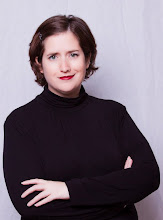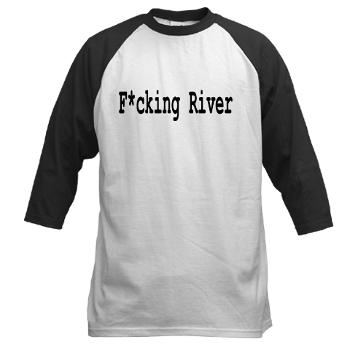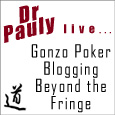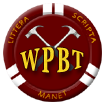Friday, January 28, 2005
Welp..... I finished Phil Gordon's book, "Poker: The Real Deal." If you've been with me since the start of this blog (oh, about a month ago), I made a comment blasting the book - I believe I said that Phil Gordon cracked me up, but not enough to buy his book.
Why would I say such a thing? Well, I'd seen it in the bookstore, and it just looked so.... hokey. I don't know. The cheesy cover, the fact that it is oddly shaped (tall and thin - the pages were not as wide as "normal" books - maybe that's a play on Gordon's gawky stature, tall and lanky), maybe the blurb "Insider tips from the co-host of Celebrity Poker Showdown" - as if that makes him credible or something! The look of the book just screamed "LAME!" to me for some reason, and I really didn't even give it the luxury of a thorough flip-through before writing it off as such.
A week or two later, I was watching the aforementioned Celebrity Poker Showdown. Alright! I admit it! It's like a sick obsession of mine. I love CPS. Why? I can't answer that question with any level of intelligence. Sometimes I like the celebrities (though I'm really not hip with pop culture, so half of the people I've never even heard of). Sometimes it's the poker playing. OK, fine, the poker usually sucks pretty bad on there, but watching cards fall and seeing hands play out and observing people is cool - it's like Big Brother. I'm googoo for the rabbit cam. Sometimes it's because Phil Gordon cracks me up. I still don't understand that - his drooling over every hot girl on the show who shows any form of poker skill whatsoever, or his ridiculous banter with the other guy (Dave Foley? Is that it?) I dunno. Randy is ready to put money on the notion that I'm going to stalk Phil Gordon out in Vegas and run away with him. I would NEVER!!.... ahem.
On a major tangent here - I think the reason I like CPS so much (besides my hunka man Phil) is that it lets me see into the mind of a fish. No, really! OK. Hear me out. I decided I wanted to play poker after watching over Randy's shoulder as he played online for a few months. As soon as I decided that I wanted to play myself, the first thing I did was run out to my favorite store and buy poker books. My first was Phil Hellmuth's Play Poker Like the Pros
(it must be the name - he cracks me up too, although I'm usually laughing at his tantrums and not his witty remarks). I devoured it. I don't remember which came next, because I think my next trip brought me several more books, but needless to say, I was going nuts for poker. I started playing with friends, and made my first real money online deposit shortly thereafter.
What does that mean? It means I never really had a chance to play with the "any two cards" mentality. I never really had an "any ace or face" stage, because all of the books in my possession instructed beginners to play pretty darned tight at first. I knew early on that an Ace with a crap kicker was a crap hand. I knew that just because a hand was suited didn't mean it was playable. All of these little junk hands - I learned to throw them away pretty early on. BUT - many of the people I find myself playing against have never read a poker book! And I have NO idea how they play! So, watching some of the horrible poker on CPS has helped me to see what some of those types of players do in various situations. I can become one with the fish, without actually becoming a fish.
So... back to Phil Gordon's book. I was watching CPS, and I realized that many of the little voices I hear in my head while playing poker are actually Phil Gordon! And, the voices are repeating lines that he himself repeats on CPS! Well, shoot. Maybe he's on to something here. I decided to buy his book with some of the Christmas gift card money I got.
And... (drumroll please).... I love it. I freakin' love it. I laughed so hard at times that I cried. Maybe that's just me - but the content is good too.
First, though, I have to say that I'm not sure I'd have enjoyed this book had I read it earlier in my poker "career." I think it would have gone over my head if I'd read it even 6 months ago. Granted, Phil covers the basics of the game - what hands beat what, the language of the game, and even borrows the starting hands chart out of Sklansky and Malmuth's "Hold'em Poker for Advanced Players". But, this is all crammed into one short chapter, with very little time devoted to it. It's very obvious that the chapter is there for formality's sake and not really intended to be a comprehensive exercise in beginner's poker. For that reason, I wouldn't recommend this book for the oober-newbie; I don't think someone very new to the game would "get" most of the book, and certainly wouldn't get enough practice with the basics from this book to be game-ready.
So, you're not a total n00b and still want to read the book. OK! The very first chapter is a brief history of poker, told in Gordon's conversational style. I have to be honest... of all the poker books I've read and re-read, I generally skip the history chapters. Number one, history has always been my most despised subject, since grade school. Number two, poker history has never been told in a way which held my interest. Maybe I'm just crushing on Phil, but I actually read his chapter on poker history, and actually enjoyed it.
The second chapter covers the basics of the game. Each chapter ends with a section called "Your Defining Moment." A scenario is laid before you, and you are to decide what you'd do in that situation before reading the solution. But - these defining moments are not simply a display of your starting hands, the board texture, and the bets around you. Phil actually draws out very graphic scenarios - where you're at, what the lady next to you has been doing all game, how the guy across from you likes to sit forward or lean back in his chair - all kinds of clues and very "real" situations that closely simulate situations you may actually find yourself in. Because - really, how often is a play just as easy as looking at your hole cards, looking at the board, and considering the bet that's been posed to you? Let's try, never.
Chapter three brings the math of poker. Nice. I love to see this discussion early on, because I put it off way too long in my own game, and it should really be learned, absorbed, and learned some more right up front. We jump right in with calculating outs, figuring probabilities of making a hand and the odds against, applying that to the odds the pot is giving you, and implied odds throughout a hand. Again, this is done in plain English - in a storytelling fashion. Somehow, there isn't a single mathematical calculation on the pages... or is there? The math is slipped in so sneakily that you don't even realize you're doing math. Where was Phil Gordon when I was in high school algebra??
From here on out, this book is, to me, unlike other poker books. The following chapters are - well, "the real deal." They're about the average player who's reading this book at home, wanting to learn some poker, and trying to play it well. Chapter 4 talks about "The Home Game." Honestly - how many small stakes players start out with guns blazing, playing poker in the casino? Maybe if you live really close to one... but most players start out by hosting or attending home games, and playing cards against friends. In this chapter, we get some tips on who to invite, how to buy your first set of poker chips (even a blurb on collecting them), how much to play for, who to serve the booze to, and how to impress your friends by riffling chips. Caro's Book of Poker Tells makes an appearance in this chapter as well.
Then come chapters covering player types, limits and progressing through them, and online poker. The next chapter (and one I found particularly interesting, with no real casino poker experience to my credit yet, and a trip to Vegas coming up!) - a chapter on playing in a cardroom.
Many poker books mention playing in a cardroom - I've heard of the rake, and know that it's proper to tip the dealers. Beyond that, you don't get much help from a standard poker book. Phil actually walks us into the casino, describes the process of signing up for a game, and all of the key players in the casino - the host, the floorman, the chip runner - all people I'd never really heard of. He goes through concepts of the rake, tipping etiquette, even what to wear. One line from this section: "One important thing to keep in mind: wearing sunglasses at the final table of the World Series can give you the look and edge of a champion. Those same sunglasses at a $2/$4 table will probably make you look like a jackass." Aww man. How can ya not love Phil?? He then covers some of your rights as a player (the right to protect your cards, the right to request a new deck or "setup" - though don't do it too often, lest thee piss off the other players, the right to a new seat), and some rights you don't have (the right to splash the pot, or string bet, or announce your hand). There are good pointers on table etiquette as well.
At this point we get some more strategy - bluffing, table image, position, physical tells, leaks in your game... then a couple chapters on no-limit tournament play, contrasting it to concepts already covered in the earlier limit portions of the book. Phil covers things like how to choose your bet size, what to do when there is a significant change at your table (someone goes out, someone doubles up, someone gets caught bluffing, blinds go up, you suffer the loss of a significant pot, etc), what to do when bubble time hits, how to play short stacked, etc.
At this point in the walkthrough of the book, you as the student are now making the final table at the WSOP. An interesting topic here is how to write your scouting report. "You try to sleep, but it's just not happening. The adrenaline is flowing, and you can't stop thinking about what the final table will look like the next day. It's time to put that nervous energy to good use by putting together a scouting report." Then, you get to read what Phil claims to be an actual scouting report on his five table mates in the WPT Bay 101 Shooting Star tourney in 2004. I'd love to get that game on TiVo and compare it to his scouting report. He refers to his opponents only by seat number.
The tail end of the book includes some tips on bankroll management, and "going pro."
Finally, you get a final series of defining moments to work through, complete with storytelling. Also included is a list of the world's best poker rooms according to Phil, and a nice glossary of key words and lingo.
I only have one real complaint about this book. It's too skinny - not in thickness, but in width. It's probably 2 inches less wide than a standard book, and I got cramps in my fingers from holding it open, since it's hardcover and you have to position your hands kind of strangely in order to grasp it (due to its small size). And the cover is cheesy (as described above). But those things don't much matter.
I loved this book - so much so that I plan to read it again very soon. There's a real effort here to give the reader lessons in how to THINK like a poker player - by actually putting thoughts into the reader's head. It is a conversational book that literally quotes the things you should be thinking in certain situations (according to Phil, anyway). Some books attempt to do the same thing - show you how to think like a poker player - but are written in such a way that you have to take the factual data and figure out how to APPLY it to various situations yourself - something that can be very difficult to do. Even if you do manage to apply the material, you are left with no sense of whether or not you applied it correctly. The way Phil describes scenarios, you've got all of the background information that went into the decision making process, and explanations as to why you should be thinking one way and not another way.
I really like how the scenarios in this book are presented. I love Phil's sense of humor, and the book is full of his quips, stories of the Tiltboys, and various one-liners that kept me laughing. I like the very realistic approach of the book - it was definitely written for someone like me in mind - a beginner/intermediate player who is looking to improve her game as well as move into some real casino play.
I give it no less than two thumbs up. Phil Gordon: The Real Deal is a damn good read.
2 Comments:
-
- April said...
Friday, January 28, 2005 5:04:00 PMGirlll...I will fight you for Phil!!!- Shelly said...
Saturday, January 29, 2005 10:49:00 AMLOL You're on! ;)









